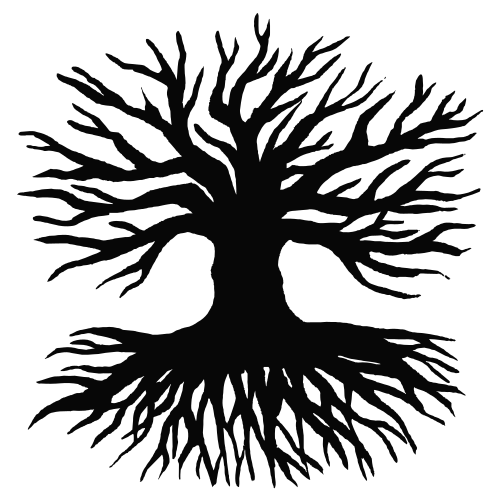 Dreams with explicitly sexual and/or violent interactions tend to get the most attention, but dreams actually tend to have surprisingly high proportions of friendly content, too. According to an analysis of the nearly 35,000 dream reports collected in the Sleep and Dream Database, 47% of the women’s dreams have at least one reference to a friendly social interaction (the most used words: friend, friends, boyfriend, help, party, love), as do 36% of men’s dreams (most used words: friend, friends, girlfriend, help, love, party. For both genders, those figures are greater than the combined percentages for sexual interactions (4% for women, 6% for men) and physically aggressive interactions (15% for women, 22% for men). If we add in non-physical aggressions (for example, saying or thinking mean things about a person), the relative proportions change, but the key fact remains: Friendly social interactions are a prominent feature of the content of most people’s dreams. If dreams offer a “royal road to a knowledge of the unconscious mind,” as Sigmund Freud famously claimed in The Interpretation of Dreams (2nd ed.), giving evidence of our deepest sexual and aggressive instincts, then dreams also provide evidence of our friendly, prosocial instincts.
Dreams with explicitly sexual and/or violent interactions tend to get the most attention, but dreams actually tend to have surprisingly high proportions of friendly content, too. According to an analysis of the nearly 35,000 dream reports collected in the Sleep and Dream Database, 47% of the women’s dreams have at least one reference to a friendly social interaction (the most used words: friend, friends, boyfriend, help, party, love), as do 36% of men’s dreams (most used words: friend, friends, girlfriend, help, love, party. For both genders, those figures are greater than the combined percentages for sexual interactions (4% for women, 6% for men) and physically aggressive interactions (15% for women, 22% for men). If we add in non-physical aggressions (for example, saying or thinking mean things about a person), the relative proportions change, but the key fact remains: Friendly social interactions are a prominent feature of the content of most people’s dreams. If dreams offer a “royal road to a knowledge of the unconscious mind,” as Sigmund Freud famously claimed in The Interpretation of Dreams (2nd ed.), giving evidence of our deepest sexual and aggressive instincts, then dreams also provide evidence of our friendly, prosocial instincts.
Although much less studied than sex and aggression, researchers have identified several patterns in dreams with friendly social interactions. As illustrated above, women tend to have more friendliness in their dreams than do men. Whether this is nature (women are innately more friendly than men) or nurture (women are socialized to be more friendly than men) is unclear; perhaps aspects of both factors are involved. According to G. William Domhoff in Finding Meaning in Dreams (1996), almost all friendliness in dreams involves the dreamer; there is very little “witnessed” friendliness. Men have more aggression in relation to male characters in their dreams, and more friendliness towards female characters. Women tend to have more friendly interactions in their dreams with men they know, and more aggressive interactions with men they do not know. All of these findings are tendencies, of course, which may or may not apply to specific individuals. But these patterns of friendly content in dreaming do seem consistent with common aspects of people’s social interactions in waking life.
Similar aspects of friendly dreaming occur with several individuals whose long-term dream journals are collected in the SDDb. For example, Jordan, an artist in her forties, has friendly interactions in 43% of her dreams; for Jasmine, a musician in her twenties, it’s 42%; for Mike, a veteran who served in Vietnam as a medic, it’s 40%. My own collection of dreams from 2012 has a friendly interactions figure of 42%; in my dreams from 2020, it’s 44%.
Not everyone has this much friendliness in their dreams. The “Natural Scientist,” whose 1939 journal of 234 dreams was analyzed by J. Allan Hobson in The Dreaming Brain (1987), has friendly interactions in 24% of his dreams. This may reflect the limited social contacts in his waking life (he was a bachelor and a laboratory scientist who studied insects). This seems to reflect the continuity principle of dreaming: the frequency of an element in dreaming reflects the emotional importance of that element in the individual’s waking life. The Natural Scientist may not have dreamed a lot about friendly social interactions, but he did dream about insects more often than anyone else in the SDDb, which was certainly continuous with his waking life.
Some variations in the friendliness of dreaming can be observed over time. During the phase in her twenties when “Beverly” belonged to a secretive religious cult, she had friendliness in 30% of her dreams. After leaving the cult and regaining control of her life, the friendliness in her dreams grew to 34% in her thirties, 36% in her forties, and 40% in her fifties. As she has described in her own writings on the experience, it took a long time for Beverly to liberate herself from the mental shackles of the cult. Her dreams seem to reflect that slow and arduous but ultimately positive journey.
Not surprisingly, nightmares tend to have low frequencies of friendliness. In a survey asking several thousand people to describe their “worst nightmare,” only 8% of the reports of 15 or more words had a reference to friendliness. Similarly, in surveys asking people about their dreams of work, just 8% have a reference to friendliness. By contrast, surveys asking about visitation dreams (in which someone who is dead appears as if alive) have friendliness in 23% of the reports, and surveys asking about “the most memorable dream you’ve ever had in your life” yield references to friendliness in 29% of the reports. It seems the more spiritually-charged a dream becomes, the more likely it will have a friendly social interaction.
Although much more will emerge from future studies, the research so far on friendliness in dreaming has several practical implications.
First, you can learn about the depth and quality of your relationships with your friends by considering who does and doesn’t appear in your dreams, and how you interact with them when they do appear.
Second, you can observe the patterns of who in your dreams initiates a friendly act, versus who receives the friendly act. Are you always on the giving end, or the receiving end? Do some of your friends only appear in one or the other role?
Third, you can see in dreams when feelings of friendliness become mixed with feelings of romantic and sexual desire. In some dreams it’s hard to tell if an interaction is friendly or romantic—which may be exactly the point, in terms of bringing to conscious awareness your ambiguous feelings towards someone else.
Fourth, if you notice that the frequency of friendliness in your dreams diminishes drastically, that might be a sign of difficulties with your social life. Everyone has their own baseline of “normal” friendliness in their dreams, so it’s worth paying enough attention to your dreams over time and becoming familiar with your own regular patterns, to enable you to recognize worrisome changes when they occur.
Note: this post first appeared in Psychology Today, 9/11/21.
 Recently wrote a post for Psychology Today about “Taboo Dreams,” meaning dreams that involve activities or behavior that violate the moral standards of the dreamer’s community in waking life. Over the years, several people have asked me questions about these kinds of dreams, and I get the sense that many more people would like to ask but are embarrassed to do so.
Recently wrote a post for Psychology Today about “Taboo Dreams,” meaning dreams that involve activities or behavior that violate the moral standards of the dreamer’s community in waking life. Over the years, several people have asked me questions about these kinds of dreams, and I get the sense that many more people would like to ask but are embarrassed to do so.


 Many dreams contain recurrent elements that have appeared in previous dreams. These elements include characters you have encountered before, in settings where you have been before, doing things you have done before. The long-term consistency of your dreaming offers a unique window into the nature of your personality and the foundational realities of your waking life.
Many dreams contain recurrent elements that have appeared in previous dreams. These elements include characters you have encountered before, in settings where you have been before, doing things you have done before. The long-term consistency of your dreaming offers a unique window into the nature of your personality and the foundational realities of your waking life.
 Dreams with explicitly sexual and/or violent interactions tend to get the most attention, but dreams actually tend to have surprisingly high proportions of friendly content, too. According to an analysis of the nearly 35,000 dream reports collected in the Sleep and Dream Database, 47% of the women’s dreams have at least one reference to a friendly social interaction (the most used words: friend, friends, boyfriend, help, party, love), as do 36% of men’s dreams (most used words: friend, friends, girlfriend, help, love, party. For both genders, those figures are greater than the combined percentages for sexual interactions (4% for women, 6% for men) and physically aggressive interactions (15% for women, 22% for men). If we add in non-physical aggressions (for example, saying or thinking mean things about a person), the relative proportions change, but the key fact remains: Friendly social interactions are a prominent feature of the content of most people’s dreams. If dreams offer a “royal road to a knowledge of the unconscious mind,” as Sigmund Freud famously claimed in The Interpretation of Dreams (2nd ed.), giving evidence of our deepest sexual and aggressive instincts, then dreams also provide evidence of our friendly, prosocial instincts.
Dreams with explicitly sexual and/or violent interactions tend to get the most attention, but dreams actually tend to have surprisingly high proportions of friendly content, too. According to an analysis of the nearly 35,000 dream reports collected in the Sleep and Dream Database, 47% of the women’s dreams have at least one reference to a friendly social interaction (the most used words: friend, friends, boyfriend, help, party, love), as do 36% of men’s dreams (most used words: friend, friends, girlfriend, help, love, party. For both genders, those figures are greater than the combined percentages for sexual interactions (4% for women, 6% for men) and physically aggressive interactions (15% for women, 22% for men). If we add in non-physical aggressions (for example, saying or thinking mean things about a person), the relative proportions change, but the key fact remains: Friendly social interactions are a prominent feature of the content of most people’s dreams. If dreams offer a “royal road to a knowledge of the unconscious mind,” as Sigmund Freud famously claimed in The Interpretation of Dreams (2nd ed.), giving evidence of our deepest sexual and aggressive instincts, then dreams also provide evidence of our friendly, prosocial instincts. New technologies are making it possible to use brain data to create video reconstructions of people’s dreams while they sleep. Is this thrilling, terrifying, or both?
New technologies are making it possible to use brain data to create video reconstructions of people’s dreams while they sleep. Is this thrilling, terrifying, or both?